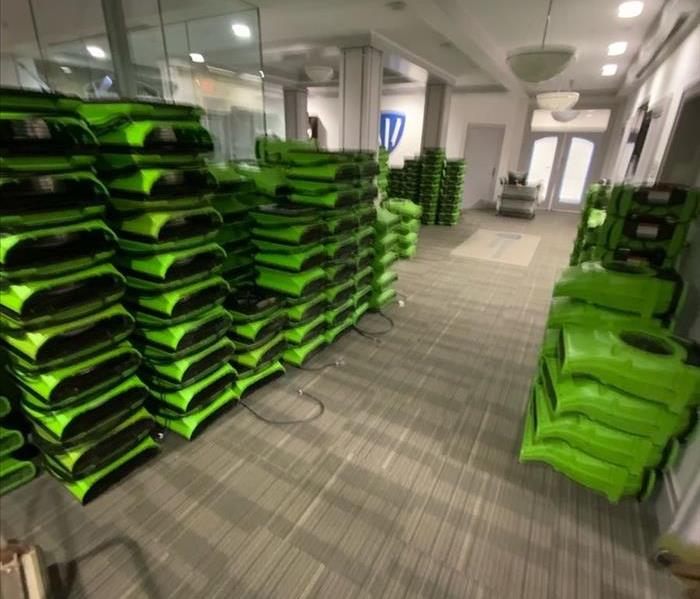Mastering Moisture: SERVPRO's Guide to Drying Methods in Commercial Properties
7/9/2024 (Permalink)
Welcome to our SERVPRO® blog, where we delve into the art and science of drying methods in commercial properties. Whether it's a burst pipe in an office building or flooding in a retail space, effective drying is crucial to minimizing damage and restoring normalcy swiftly. Join us as we explore the various techniques and innovations SERVPRO employs to tackle moisture in commercial settings.
Understanding the Importance of Effective Drying
Water damage in commercial properties can stem from various sources—burst pipes, roof leaks, sprinkler malfunctions, or natural disasters like storms. Left unchecked, excess moisture can lead to mold growth, structural damage, and compromised indoor air quality. Swift and thorough drying is essential not only for mitigating immediate damage but also for preventing long-term issues that can disrupt operations and affect profitability.
Advanced Drying Techniques
Air Movers and Dehumidifiers: These are the workhorses of drying equipment. Air movers create airflow across wet surfaces, speeding up evaporation. Dehumidifiers then extract moisture from the air, lowering humidity levels to prevent secondary damage like mold growth. SERVPRO technicians strategically place these devices to optimize drying efficiency, ensuring all affected areas receive proper airflow and moisture removal.
Injectidry System: For hard-to-reach areas such as wall cavities or under flooring, SERVPRO utilizes the Injectidry system. This innovative approach involves placing specialized drying equipment that introduces dry air into cavities, effectively drying materials without the need for extensive demolition. It's a precise method that minimizes disruption while ensuring thorough drying.
Desiccant Dehumidification: In cases of severe water damage or high humidity environments, SERVPRO employs desiccant dehumidifiers. These powerful units use desiccant materials to absorb moisture from the air, making them particularly effective in large-scale commercial settings where rapid drying is critical. They excel in extreme conditions and are integral to restoring complex structures like warehouses or manufacturing facilities.
Moisture Detection Technology: Before and during the drying process, SERVPRO utilizes advanced moisture detection tools to assess the extent of water damage accurately. Thermal imaging cameras, moisture meters, and hygrometers help identify hidden pockets of moisture that may not be visible to the naked eye. This proactive approach ensures that no area is overlooked, preventing potential complications down the road.
Tailored Solutions for Every Scenario
At SERVPRO, we understand that each commercial property is unique. Our drying strategies are tailored to the specific needs of the environment and the extent of the damage. Whether it's a high-rise office building, a retail storefront, or a hospitality venue, our certified technicians apply their expertise to deliver efficient and effective drying solutions.
The SERVPRO Advantage
What sets SERVPRO apart is our commitment to excellence and customer satisfaction. From initial assessment to final inspection, we prioritize clear communication, meticulous planning, and superior craftsmanship. We work closely with property managers, insurance adjusters, and business owners to ensure a seamless restoration process that minimizes disruption and maximizes recovery.
Conclusion
Effective drying in commercial properties is not just about removing visible water; it's about restoring peace of mind and ensuring business continuity. With cutting-edge equipment, expert knowledge, and a dedication to quality service, SERVPRO stands ready to tackle any water damage challenge, big or small.
Join us on our journey as we continue to explore the world of restoration, sharing insights, tips, and success stories that showcase SERVPRO's unwavering commitment to making a difference in communities and businesses alike.
Stay tuned for more updates and information on how SERVPRO transforms water damage disasters into opportunities for resilience and renewal.






 24/7 Emergency Service
24/7 Emergency Service
